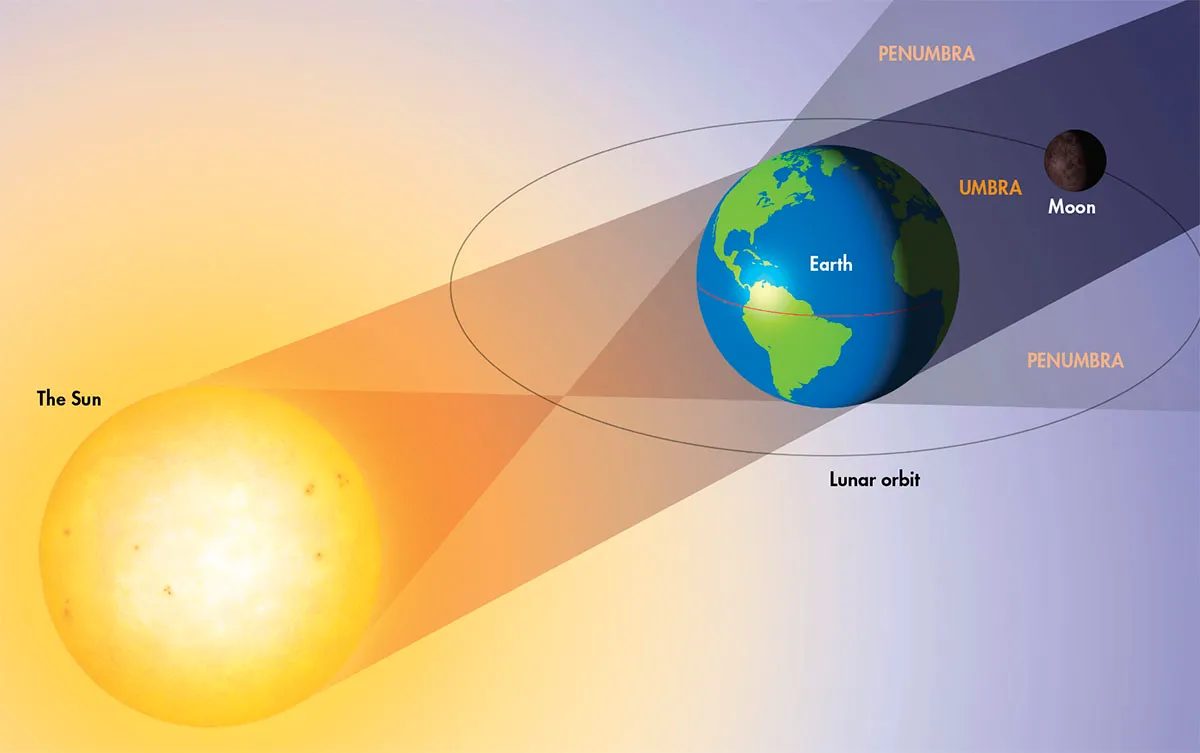A blood Moon total lunar eclipse was visible on 7/8 September 2025.
Observers based in in India, China, Russia, Australia and New Zealand, east Africa and the regions surrounding central Asia, got to see the whole thing.
This lunar eclipse – sometimes known as a blood Moon – wasn't visible in North America, although the very western part of Alaska may have been able to see a partial lunar eclipse.
In the UK and western Europe, the Moon was eclipses as it rose above the horizon.
Get weekly stargazing advice by signing up to our e-newsletter and subscribing to our YouTube channel.

Blood Moon explained
A lunar eclipse occurs when the Sun, Earth and the Moon are aligned in a straight line, in that order.
Light from the Sun illuminates the full disc of the Moon, but because Earth is in the way, that sunlight has to pass through Earth's atmosphere before hitting the Moon.

As it passes through our atmosphere, sunlight is scattered, meaning shorter wavelengths (blue) are dispersed to a greater extent than longer wavelengths (red).
Red light, being less scattered, is bent – or refracted – towards the Moon, giving the light a reddish colour.
Sometimes, for this reason, you'll hear a total lunar eclipse being called a 'blood Moon'.

Corn Moon eclipse
This total lunar eclipse ocurred during the Corn Moon.
'Corn Moon' is one of many nicknames given to each of the monthly full Moons of the year.
These nicknames reflect changes or significant moments in nature that occur during the month in question.
So, for example, the 'Snow Moon' is the February full Moon. The June full Moon is the 'Strawberry Moon', because June is the month when strawberries are ripe for picking.

This total lunar eclipse rose on September 7, 2025, meaning it was the 2025 Corn Moon. But every September full Moon is known as the 'Corn Moon', not just this one.
Because this September 2025 full Moon was also a total lunar eclipse, some referred to it as a 'Corn Moon eclipse'.
The term 'Corn Moon' doesn't indicate that the September full Moon will appear differently to any other full Moon of the year.
However, the September 2025 full Moon did appear different, because it was also a total lunar eclipse.

Blood Moon timings for September 7, 2025
The best places to see all of the September 7, 2025 blood Moon total lunar eclipse were Asia, Australia and the very eastern parts of Africa.
Observers could also see the total lunar eclipse in Antarctica, the western Pacific Ocean and the Indian Ocean.
Here are the timings for the eclipse, in UTC, which is Coordinated Universal Time.
- 3:28 PM UTC – Penumbral eclipse begins
- 4:27 PM UTC – Partial eclipse begins
- 5:30 PM UTC – Total eclipse begins
- 6:11 PM UTC – Maximum eclipse
- 6:52 PM UTC – Total eclipse ends
- 7:56 PM UTC – Partial eclipse ends
- 8:55 PM UTC – Penumbral eclipse ends

Watch the lunar eclipse online
If you were clouded out, or not in a part of the world where you were able to see the total phase of the September 2025 lunar eclipse, you could watch a livestream of the event online, courtesy of Time and Date.
If you managed to see or photograph the September 7, 2025 total lunar eclipse, get in touch by emailing contactus@skyatnightmagazine.com

